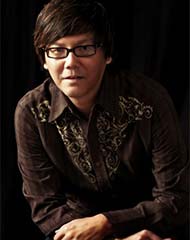
“We exist in a craft that suffers not from being uninformed, but often misinformed.” You can’t argue with Tony Corbell’s definition of the current state of digital photography. In an era when more and more people are taking to photography to express themselves – a digital era when it’s easier than ever to share work with the world – there’s bound to be a smorgasbord of misconceptions out there. When it comes to lighting and lighting techniques, bad advice might even outweigh the good! One thing is for certain – if you are new to the industry, it’s extremely difficult to decipher between good and bad advice. Don’t get discouraged. To help you on your way, we spoke with pros Brooke Shaden, Tony Corbell and Scott Robert Lim to help you identify some of the most common misconceptions regarding lighting and lighting techniques. Here’s what they had to say:

Misconception: If you can’t use and apply lighting systems, you will never be good.
“I’ve been told time and time again that to be professional I have to start learning how to use lights. I’ve been told about this flash and that, and the best equipment to buy, all for the sake of bringing my photography to the next level. I think that lighting can be amazing, and the fact that I don’t use external lights doesn’t mean that I am not manipulating light, be it the sun or a lamp. I have built my entire portfolio and career around what floats around in my imagination, and I believe that there is not any single tool that a photographer needs to be better or to be professional. Use what you love, experiment and try new things, but never feel as though you have to conform to someone else’s standards of perfection.”
Misconception 1: If the tonality of your subject is really dark, open up your exposure to lighten slightly.
“This is just untrue. Exposure should always be based on the amount of light that is present, NOT the tonality of your subject. A good example would be someone with very dark skin. Let’s say you feel they appear a bit too dark so you open your exposure a bit. The problem is everything within the picture will also lighten up and possibly appear too light. Proper lighting of any subject will always trump a bad choice in exposure. A black car should look black. A white flower should appear white.”
Misconception 2: Almost any situation can be improved by adding more light(s)
“This too is untrue. The world’s top photographers and cinematographers all agree that extensive use of shadows and taking light away can almost always be more effective than adding light to a photograph. Imagine the control you might have with a multiple lighting situation if you mastered your craft first with one light. Make that one light appear as two or three or four. Then move on to two lights and master these two, and so on. Fully understanding your craft will always win out over blindly following what others might attempt to teach you.”
Misconception: Shutter Controls flash exposure.
“Shutter is unable to control flash exposure. Light travels at 186,000 miles per second and is almost instantaneous and a camera shutter cannot vary the amount of light hitting the camera sensor. Shutter controls ambient light or continuous light. There are a few ways to control flash in a manual system:
1) Vary the output power of the flash.
2) Aperture camera setting– the smaller the FStop the more light it will let in and visa-versa.
3) Distance to subject.
4) ISO – the higher the ISO the more powerful the flash output.
The truth is, every time flash is used, it is like taking two exposures in one shot- one exposure controlled by the shutter and the second controlled by the flash.”
Still interested in learning to light? Check out our Ultimate Resource Guide to Lighting.
Learn How to Create Perfect Studio Lighting Techniques. RSVP now for Clay Patrick McBride, Lighting with Gels.





